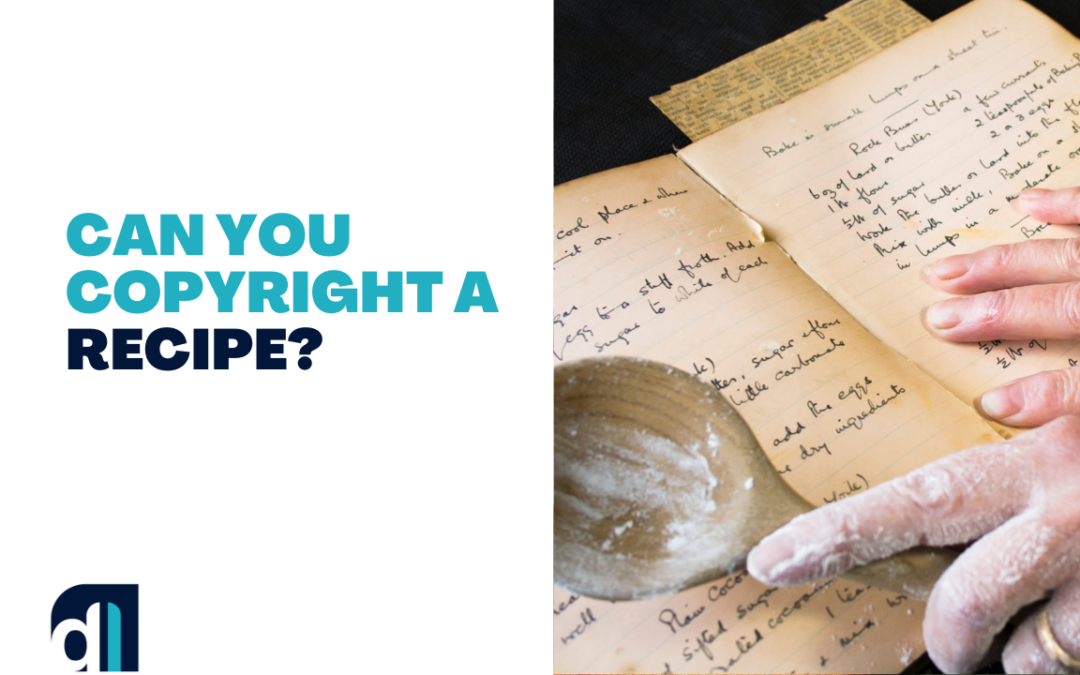Discover the intricacies of US Copyright Law as it relates to recipes, and gain insight into how much protection culinary creations can receive under US Intellectual Property Law.
US Copyright Law | What is protectable?
US copyright law protects original works of authorship with a modicum of creativity expressed in a tangible form. These works can be literary, dramatic, artistic, or musical works. All the US copyright office asks is that what you create is original, an expression of ideas but not the idea itself, and that it be fixed in a tangible form.
Food Recipes are Literary Works under US Copyright Law
To protect their brand, restaurants, and chefs use names, logos, and slogans that identify with the products or services associated with it. This is done through trademark protection under US trademark law. But to protect actual recipes, we must turn to another kind of intellectual property. One that identifies a dish as an art form and not as a source identifier, this is how we land at protecting recipes as a copyright.
The Copyright Act defines a literary work as any form of expression in words, numbers, or other symbols or indicators, regardless of the medium used to embody them. This includes books, manuscripts, phonorecords, film, tapes, disks, and cards, excluding audiovisual works.
Furthermore, according to the US Copyright Office, a literary work is a type of creation that utilizes narrative, descriptive, or explanatory text to convey a particular subject, theme, or idea instead of relying on dialogue or dramatic action.
Merriam-Webster states a recipe is “a set of instructions for making something from various ingredients.” It seems pretty evident that food recipes are considered literary works as they consist of written material usually published in a recipe cookbook, blog, or other tangible forms such as newspapers and magazines. Although, for legal protection, food recipes would fall under literary work, mere listings of different ingredients and spices will not be considered a substantial literary expression.
Copyright Protection for Chefs and Cookbooks
The idea-expression dichotomy limits protections around a food recipe. This is where US copyright law does not allow the protection of an idea but the expression of the idea. There are many variations of a classic dish, but for recipes to be protected as literary works, there must be a substantial literary expression.
Include Content Beyond the Ingredient List
So what does the idea-expression dichotomy mean for recipes? It means that to be copyrighted; an individual recipe will need more than just a mere listing of ingredients and directions associated with them.
Creative expression around an idea for individual recipes, blogs, or cookbook development looks different for each writer. When creating recipes for a cookbook, it is essential to understand the limitations of what is protectable. This is why it is vital to consult an intellectual property or copyright lawyer when from the inception of the project.
Creating a new dish takes months of testing various methods and processes. It is not as much about the resulting dish as the process that leads the cookbook’s author there. Drawing inspiration from diverse cultures, childhood memories, and travel experiences can help safeguard a collection of recipes or an individual one.
Exploring different aspects of life often leads recipe creators to delve into the history of cooking techniques. This allows some to appreciate the significance of an ingredient while others use it to showcase a deserving community. It’s crucial to provide a detailed description of each ingredient and step’s significance. Some are creative enough to include relevant information about the chemical processes involved (shout-out to Kenji Lopez-Alt).
Ok, writing about a chemical process isn’t crucial, but showcasing a unique creative expression around why the recipe is important enough to be published is. Publications and consumers are interested in the story behind your recipes, not just the list of ingredients and directions. Therefore, a little bit of creativity goes a long way toward copyright protection.
Use Copyright Notices for Recipes
A copyright notice is a statement by the author informing the public that a copyright holder is claiming ownership of the published material. A notice usually consists of the date of first publication, the name of the copyright owner, and the copyright symbol. Using it as an anti-plagiarism measure is common, but it can also serve as evidence in copyright infringement cases where the defendant seeks to avoid responsibility.
To learn more about how copyright notices benefit your creations, contact Drishti Law.
Trade Secret Protection for Recipes
You might ask if someone can protect specific ingredients involved in a recipe.

Although copyright protection will not extend to specific ingredients, this is where creators turn to trade secrets. Think Coca-Cola or KFC’s secret blend of herbs and spices. Trade secrets, more specifically non-disclosure agreements, are a way to protect confidential information that is a competitive advantage within the industry.
It is essential to establish strict policies to safeguard the techniques and procedures used in a recipe chat, which are seen as a competitive advantage. The critical aspect of protecting something as a trade secret is that it must remain confidential. It is advisable to seek guidance from an intellectual property lawyer to ensure that the appropriate processes are in place to maintain confidentiality.

Sahil Malhotra
Sahil Malhotra is an Intellectual Property Attorney, who founded Drishti (“vision”) law because of his vision in protecting dreams and ideas.
He provided individuals and small businesses with an opportunity to enhance their IP’s value by helping them register trademarks and successfully argue against office actions. In addition to his training and experience, he has been deeply involved in the multifaceted IP portfolio at UIC and continues to be associated with IP organizations and conferences.
To know more about Sahil Malhotra — Click Here
You may follow Sahil Malhotra on Facebook: Sahil Malhotra and on Instagram: @Sahil Malhotra

